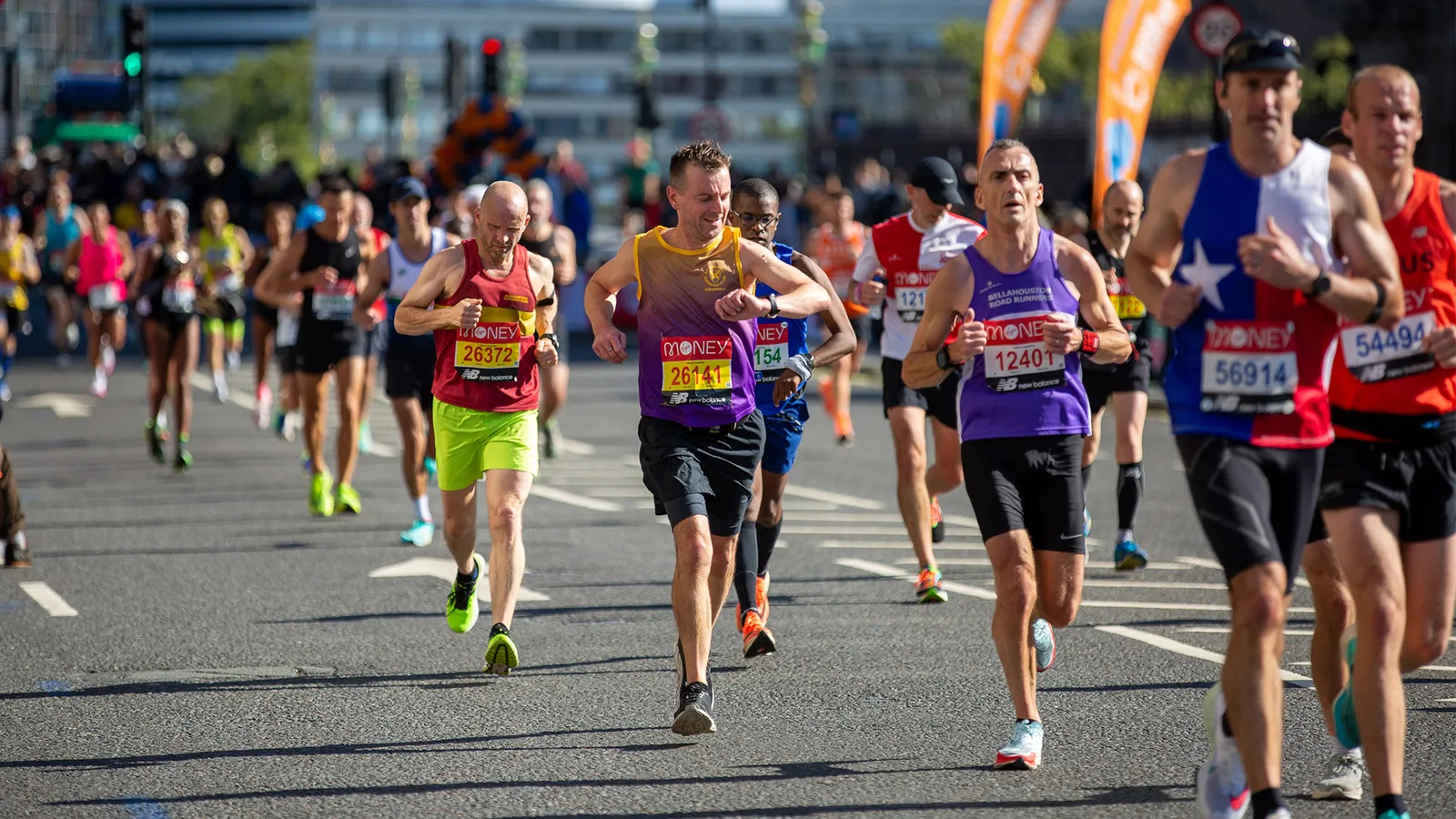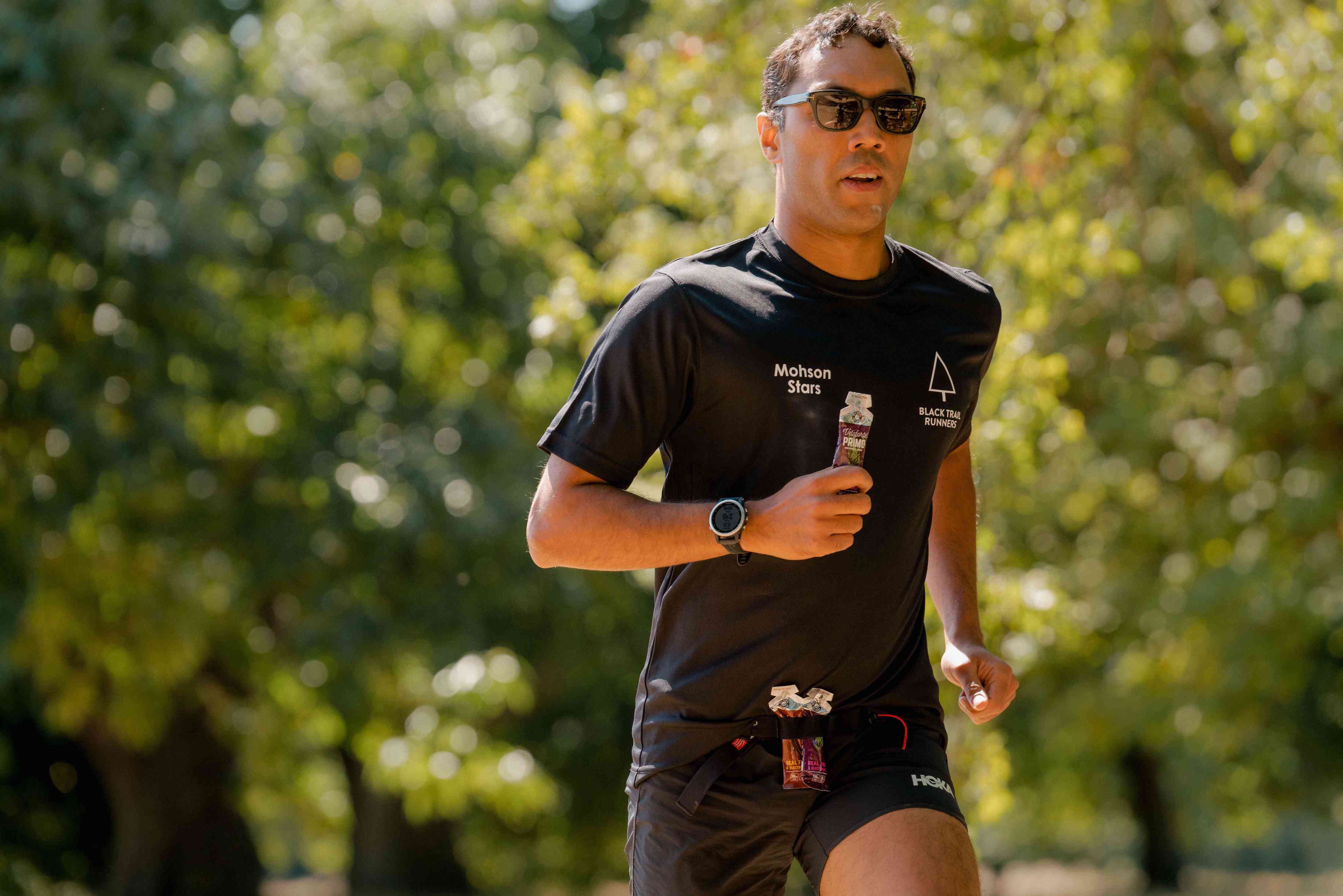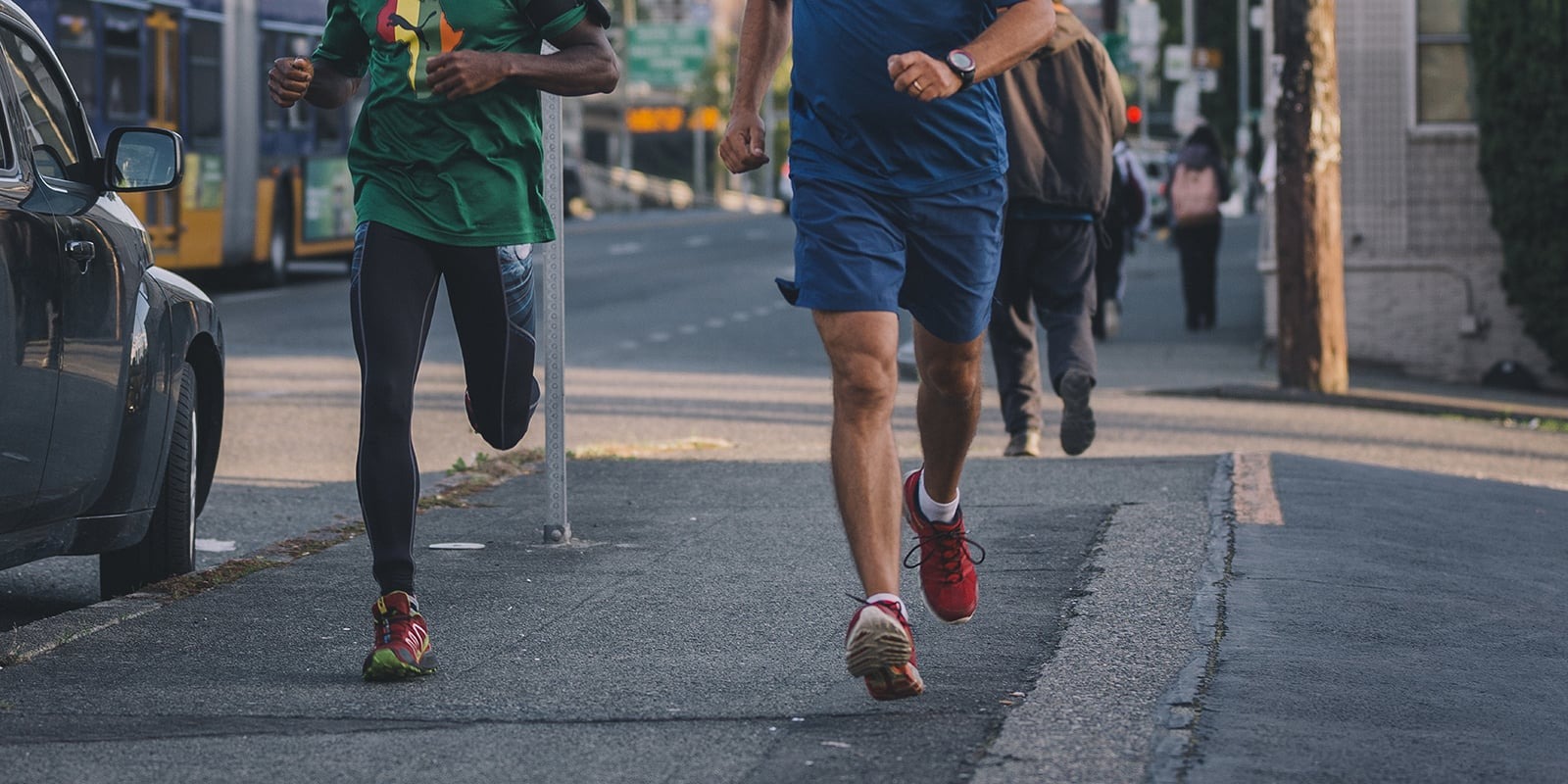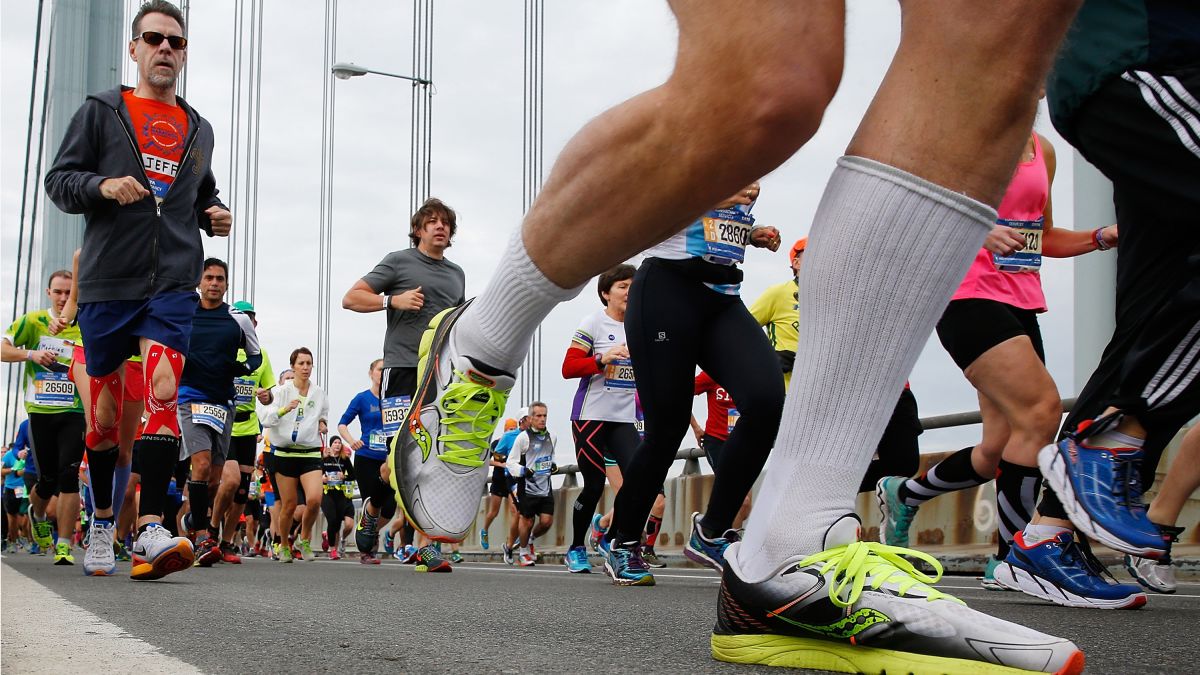

Featured
How To Find Your Marathon Pace
Published: October 5, 2023
Discover how to determine your marathon pace with our featured guide, providing expert advice and tips to help you reach your goals.
Introduction
Marathons are the ultimate test of endurance and willpower, attracting thousands of runners from around the world. Whether you’re a seasoned marathoner or a first-time participant, one of the key factors in ensuring a successful race is finding your marathon pace. Your marathon pace is the speed at which you aim to complete the 26.2-mile distance, and finding the right pace for you is crucial to prevent burnout and maximize performance.
Understanding your marathon pace involves more than just picking a number. It requires a deep understanding of your fitness level, goals, and the intricacies of the race itself. There are several factors that can influence your marathon pace, including your previous race times, training volume, terrain, weather conditions, and even your mental state. All of these elements should be taken into account when determining your target marathon pace.
Once you have a target marathon pace in mind, it’s important to follow a training plan that will help you achieve and maintain that pace. This can involve a combination of speedwork, long runs, tempo runs, and recovery runs. It’s also essential to practice your marathon pace during training to familiarize your body with the required effort and establish a comfortable rhythm.
On race day, maintaining your marathon pace requires discipline and mental fortitude. It’s normal for emotions and adrenaline to run high during the early stages of the race, but it’s important to stick to your predetermined pace and not get swept away by the excitement. Consistency is key, and by pacing yourself correctly, you’ll be able to conserve energy for the latter part of the race.
However, it’s crucial to acknowledge that every race is unique, and external factors can impact your marathon pace. Weather conditions, elevation changes, and even pacing strategies of other runners can all have an effect. Being flexible and adjusting your pace accordingly can make a significant difference in achieving your desired race result.
In this comprehensive guide, we’ll delve deeper into the nuances of finding your marathon pace. We’ll explore the factors that affect your pace, provide strategies for training to achieve your marathon pace, and offer tips for maintaining that pace during the race. By the end, you’ll have the knowledge and confidence to determine and maintain your ideal marathon pace, setting yourself up for a successful race.
Understanding Your Marathon Pace
Your marathon pace is the speed at which you aim to complete the 26.2-mile distance of a marathon. It is crucial to have a clear understanding of your individual marathon pace as it sets the foundation for your training and race strategy. Your marathon pace is unique to you and is influenced by various factors such as your fitness level, goals, and the terrain of the race.
When determining your marathon pace, it’s important to consider your previous race times and personal records. These benchmarks can provide valuable insights into your current fitness level and help you set realistic expectations for your target pace. It’s also essential to consider the distance of your previous races, as a marathon requires a different level of endurance compared to shorter distances.
Another crucial factor in understanding your marathon pace is the terrain of the race. Marathons can take place on different types of courses, including flat, hilly, or a mix of both. The elevation changes can greatly influence your pace, and it’s important to take this into account when determining your goal time. For hilly courses, it’s common to adjust your pace on uphill sections and pick up the pace on downhill portions to maintain an overall consistent effort.
Furthermore, your marathon pace can be affected by external factors such as weather conditions. Running in hot and humid temperatures can increase your heart rate and impact your pace, while running in cold temperatures may require extra warm-up time to avoid stiffness and potential slowdown. It’s important to consider these factors and make necessary adjustments to your pace strategy accordingly.
Mental strength and mindset also play a significant role in understanding your marathon pace. It’s important to strike a balance between challenging yourself and setting realistic goals. Understanding your mental and physical limits will help you pace yourself appropriately and prevent burning out too early in the race.
Ultimately, understanding your marathon pace requires a combination of self-awareness, knowledge of race conditions, and an understanding of your own abilities. It’s crucial to be realistic and set a pace that balances your fitness level and race goals. Remember, finding the right marathon pace is a process that may require experimentation and adjustments along the way. By taking the time to understand your marathon pace, you will set yourself up for a successful and enjoyable race experience.
Factors Affecting Your Marathon Pace
Several factors can have a significant impact on your marathon pace. Understanding and acknowledging these factors will help you set a realistic and achievable goal time. Here are some key factors that can affect your marathon pace:
1. Fitness Level: Your current fitness level plays a crucial role in determining your marathon pace. The more fit and conditioned you are, the faster you’ll be able to run. Consistent training, including both speedwork and long runs, will improve your cardiovascular endurance and muscular strength, enabling you to maintain a faster pace throughout the marathon race.
2. Training Volume and Intensity: The volume and intensity of your training can directly impact your marathon pace. If you’ve been consistently training at a high volume and pushing your limits with challenging workouts, you’ll likely have the ability to sustain a faster pace during the race. On the other hand, if your training has been less consistent or lower in intensity, you may need to adjust your expectations accordingly.
3. Terrain and Course Elevation: The terrain and elevation of the marathon course can significantly affect your pace. Running on a flat course allows for a more consistent pace, while hilly terrain requires adjustments in effort and pace strategy. It’s essential to familiarize yourself with the course profile and make appropriate adjustments to maintain your target pace throughout the race.
4. Weather Conditions: The weather conditions on race day can greatly impact your marathon pace. Running in hot and humid conditions can increase your heart rate and lead to slower overall pace. On the other hand, running in cool and favorable weather can contribute to a faster pace. It’s important to take into account the weather forecast and make appropriate adjustments to your pace strategy.
5. Mental State and Race Strategy: Your mental state and race strategy can greatly influence your marathon pace. Maintaining a positive mindset, staying focused, and having a well-thought-out race strategy will help you stay on track and avoid starting too fast or slowing down too much. Being mentally prepared and having a clear pacing plan will contribute to a more consistent and controlled marathon pace.
6. Fueling and Hydration: Proper fueling and hydration are essential for maintaining your marathon pace. Inadequate nutrition and hydration can lead to fatigue and a decline in pace. It’s crucial to develop a fueling strategy that provides your body with the necessary energy and fluids during the race to sustain your target pace.
7. External Factors: There may be unforeseen external factors during the race that can impact your marathon pace. This could include crowded start lines, weaving through other runners, or uneven terrain. It’s important to be adaptable and adjust your pace as needed to navigate these factors and maintain your desired pace.
By understanding and considering these factors, you can better prepare yourself for the challenges ahead and ensure that your marathon pace is realistic and attainable for race day.
Determining Your Target Marathon Pace
Deciding on your target marathon pace is a critical step in preparing for a successful race. It requires careful consideration of your goals, abilities, and the race itself. Here are some key factors to help you determine your target marathon pace:
1. Previous Race Performance: Look at your previous race times, especially within the distance of a half marathon or longer. Assess your race performances and use them as a reference point to determine a realistic and attainable target pace for the marathon. Keep in mind that the marathon requires endurance and pacing skills beyond shorter races, so adjust your pace accordingly.
2. Current Fitness Level: Evaluate your current fitness level and consider any recent improvements in your training or performance. If you have been consistently training and achieving new personal records in shorter distances or training runs, you may be capable of setting a more ambitious target marathon pace.
3. Time Goals: Determine your time goal for the marathon. Are you aiming to finish within a specific time range, qualify for a particular race, set a personal record, or simply complete the race? Your time goal will help guide your target pace. Keep in mind that it’s important to set realistic and achievable goals to prevent disappointment and burnout.
4. Race Considerations: Take into account the characteristics of the race course. Is it flat, hilly, or a combination of both? The course elevation profile will have a significant impact on your target pace. Adjust your pace strategy to account for any inclines or declines on the course to maintain a consistent effort level throughout the race.
5. Training Performance: Reflect on your training performances. How have your long runs and tempo runs been going? Consider the pace at which you have been able to comfortably complete your training runs. This will give you a good indication of your current capabilities and help you determine an appropriate marathon pace.
6. Pacing Strategy: Consider your desired pacing strategy for the marathon. Are you aiming for a negative split, where you run the second half of the marathon faster than the first? Or do you prefer a more even-paced approach? Different pacing strategies require different target paces. Understand the strategy that works best for you and set your target pace accordingly.
7. External Factors: Be mindful of any external factors that may affect your race, such as weather conditions, altitude, or potential logistical challenges. These factors may require adjustments to your target pace on race day.
Once you have considered these factors, it’s important to set a target marathon pace that is challenging yet realistic. It should allow you to push yourself without risking burnout or injury. Remember, finding the right target pace requires a balance between your goals, abilities, and the demands of the race. By setting a well-informed and realistic target marathon pace, you’ll set yourself up for an enjoyable and successful race experience.
Training Strategies to Achieve Your Marathon Pace
Training for a marathon involves more than just logging miles. To achieve your target marathon pace, you need to implement specific training strategies that will improve your fitness, endurance, and pacing abilities. Here are some key strategies to help you prepare for your target marathon pace:
1. Long Runs: Long runs are a crucial component of marathon training. Gradually increase the distance of your long runs to build endurance and get your body accustomed to running for an extended period of time. Practice maintaining a consistent pace during these runs to simulate marathon conditions.
2. Tempo Runs: Tempo runs help improve your lactate threshold and running economy. Incorporate tempo runs into your training schedule by running at a comfortably hard pace for a sustained period. This will train your body to maintain a faster pace over a longer period of time.
3. Speedwork: Intervals, fartleks, and track workouts can improve your overall speed and race pace. Include speed sessions in your training plan to develop your anaerobic capacity and help you sustain your target marathon pace for longer periods.
4. Pacing Practice: Dedicate specific training runs to practice your target marathon pace. These runs help you develop a sense of pacing and familiarize yourself with the effort required to maintain your desired pace. Gradually increase the distance of these runs as you progress in your training.
5. Strength Training: Incorporating strength training exercises into your regimen will improve your muscular endurance, stability, and running economy. Focus on exercises that target your legs, core, and upper body to support your running form and help you maintain proper technique throughout the race.
6. Recovery Runs and Rest Days: Incorporate recovery runs and rest days into your training schedule to allow your body time to repair and rebuild. These lighter days help prevent overtraining and reduce the risk of injury. Listen to your body and prioritize rest and recovery to maximize the effectiveness of your training.
7. Race Simulation Runs: Conduct race simulation runs to mimic race day conditions and practice your target marathon pace. This can include starting your run at the same time as the actual race, wearing your race day gear, and following your planned fueling strategy. This will help you mentally and physically prepare for the race while fine-tuning your pacing abilities.
8. Consistency: Consistency is key in marathon training. Stick to your training plan, remain dedicated, and consistently put in the effort required to achieve your target pace. Consistent training allows your body to adapt and improve gradually, ultimately helping you maintain your desired marathon pace on race day.
Remember, achieving and maintaining your target marathon pace requires a combination of physical and mental training. Be patient with yourself, stay disciplined, and trust in the process. With the right training strategies, you’ll be well-prepared to meet your marathon pace goal on race day.
Tips for Maintaining Your Marathon Pace During the Race
The marathon race is a test of endurance and pacing. To ensure you maintain your target marathon pace throughout the race, consider the following tips:
1. Start conservatively: Avoid the temptation to start the race too fast. Starting at a pace that is slightly slower than your target pace will allow you to ease into the race and conserve energy for the later stages.
2. Use planned splits: Break the marathon into smaller segments and assign planned splits for each segment. This will guide you to maintain a consistent pace and avoid going too fast or too slow. Monitor your pace regularly using a GPS watch or pace bands.
3. Run relaxed: Keep your body relaxed and maintain good running form throughout the race. Tension and inefficient form can lead to wasted energy and a breakdown in pace. Stay tall, keep your shoulders relaxed, and focus on a smooth and efficient stride.
4. Hydrate and fuel properly: Stay hydrated and fuel adequately during the race. Follow your pre-determined fueling plan and take advantage of aid stations along the course. Fueling properly will help maintain your energy levels and prevent a drop in pace due to fatigue.
5. Break the race into mental checkpoints: Mentally divide the race into smaller checkpoints, such as reaching certain miles or landmarks. Focus on getting to each checkpoint and then shift your attention to the next one. Breaking the race down mentally can make it feel more manageable and help you maintain your pace.
6. Keep a steady rhythm: Find a steady rhythm and focus on maintaining it. Strive for a consistent cadence and breathing pattern. This will help you stay calm and avoid unnecessary fluctuations in pace.
7. Stay mentally focused: Maintain a positive mindset and stay mentally engaged throughout the race. Use mental strategies such as visualization, positive self-talk, and focusing on your race plan to stay focused and motivated. Be prepared for challenging moments and remind yourself of your training and preparedness.
8. Draw energy from the crowds: Feed off the energy and support of the spectators along the course. Their cheers and encouragement can give you a boost and help you maintain your pace. Acknowledge their presence and use it to your advantage.
9. Adjust for challenging sections: Be prepared to adjust your pace for challenging sections of the course such as hills or headwinds. Slow down slightly on uphills to conserve energy and compensate with a faster pace on downhill sections. Be adaptable and make necessary adjustments to maintain your overall target pace.
10. Believe in yourself: Believe in your training and trust in your abilities. Stay confident in your goal pace and know that you are capable of maintaining it. Maintain a positive mindset and remember that you have prepared for this moment.
By implementing these tips, you’ll be better equipped to maintain your marathon pace throughout the race. Consistency, mental focus, and proper pacing will help you achieve your target pace and reach the finish line with confidence and success.
Adjusting Your Marathon Pace on Race Day
Race day is an exciting and dynamic experience, and sometimes adjustments to your marathon pace may be necessary. Here are some factors to consider and strategies to help you make necessary pace adjustments:
1. Weather Conditions: Be prepared for unexpected weather conditions on race day. High heat, humidity, or strong winds can significantly affect your perceived effort and pace. Adjust your pace accordingly, understanding that it may be necessary to slow down slightly to account for these external factors.
2. Course Conditions: Assess the terrain and course conditions. If the course is hilly, adjust your pace on uphill sections to conserve energy and consider picking up the pace on downhill sections. Be mindful of any uneven surfaces or technical sections that may require adjustments to your pace.
3. Early Race Surges: In the excitement of the race start, some runners may surge ahead, creating a faster pace. Be disciplined and avoid getting caught up in these surges. Stick to your target pace and trust in your own race plan. Over time, you may see these runners tire and be able to maintain a more consistent effort.
4. Energy Levels and Fatigue: Assess your energy levels and fatigue levels during the race. If you find yourself struggling or feeling overly fatigued, it may be necessary to adjust your pace slightly. Listen to your body and prioritize conserving energy to avoid hitting the wall later in the race.
5. Mental Game: Stay mentally engaged throughout the race and be prepared for mental highs and lows. If you find yourself struggling mentally, it can be helpful to break the race down into smaller segments or focus on specific goals or mantras to regroup and find your rhythm. Adjust your focus, maintain positive self-talk, and use mental strategies to maintain your desired pace.
6. Adjusting Time Goals: During the race, circumstances may arise that necessitate adjusting your time goals. This could be due to unforeseen factors such as injury, illness, or unexpected setbacks. It’s important to be adaptable and mindful of your body’s needs. It’s better to make a necessary pace adjustment and finish strong than to risk injury or worsening conditions.
7. Experienced Pacing Strategies: Consider employing experienced pacing strategies. If you’re struggling to maintain your target pace, you may want to form or join a pace group led by experienced pacers. These pacers are skilled at maintaining a consistent pace and can provide valuable guidance throughout the race.
8. Trust in Training: Remember that you have put in the training and preparation for this race. Trust in your training and have confidence in the work you’ve done. Adjusting your marathon pace doesn’t mean abandoning your goals—it simply means being adaptable and making the necessary adjustments to ensure a successful race.
As you navigate the challenges and excitement of race day, be prepared to adjust your marathon pace based on various factors. Approach any adjustments with a calm and strategic mindset, making choices that will allow you to maintain your overall race momentum and achieve your marathon goals.
Conclusion
Finding and maintaining your marathon pace is a crucial element of a successful race. Understanding the factors that influence your pace, setting realistic target goals, and implementing effective training strategies are all key to achieving your desired marathon pace.
Consider factors such as your fitness level, previous race performances, course terrain, and weather conditions when determining your target marathon pace. With this knowledge, you can set a realistic goal that challenges you while ensuring you don’t start too fast or slow.
Implementing training strategies such as long runs, tempo runs, speedwork, and strength training will prepare your body for the demands of the marathon distance and help you maintain your target pace throughout the race.
On race day, stay focused, start conservatively, and maintain a steady rhythm. Be flexible and adjust your pace as needed based on weather conditions, course elevation, and your own energy levels. Utilize mental strategies to stay motivated and overcome challenges along the way.
Remember, finding your marathon pace is a process that may require adjustments and flexibility. Trust in your training, believe in yourself, and have confidence in your abilities. With proper preparation and pacing, you’ll cross the finish line achieving your marathon goals.









